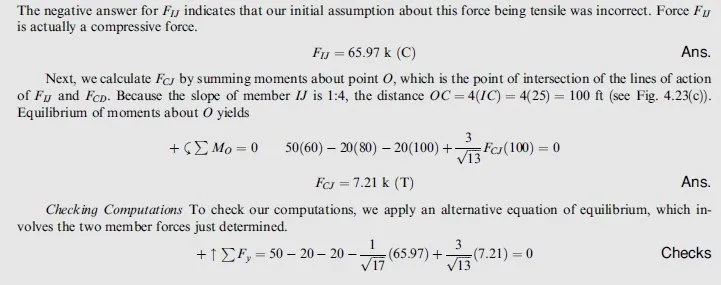Example 4.8
Determine the forces in members CJ and IJ of the truss shown in Fig. 4.23(a) by the method of sections.
Solution
Section aa As shown in Fig. 4.23(a), a section aa is passed through members IJ; CJ, and CD, cutting the truss into two portions, ACI and DGJ. The left-hand portion, ACI, will be used to analyze the member forces.
Reactions Before proceeding with the calculation of member forces, we need to determine reactions at support A. By considering the equilibrium of the entire truss (Fig. 4.23(b)), we determine the reactions to be Ax ¼ 0, Ay = 50 k↑ , and Gy = 50 k ↑.
Member Forces The free-body diagram of the portion ACI of the truss is shown in Fig. 4.23(c). The slopes of the inclined forces, FIJ and FCJ , are obtained from the dimensions of the truss given in Fig. 4.23(a) and are shown on the free-body diagram. The unknown member forces are determined by applying the equations of equilibrium, as follows. Because FCJ and FCD pass through point C, by summing moments about C, we obtain an equation containing only FIJ :





